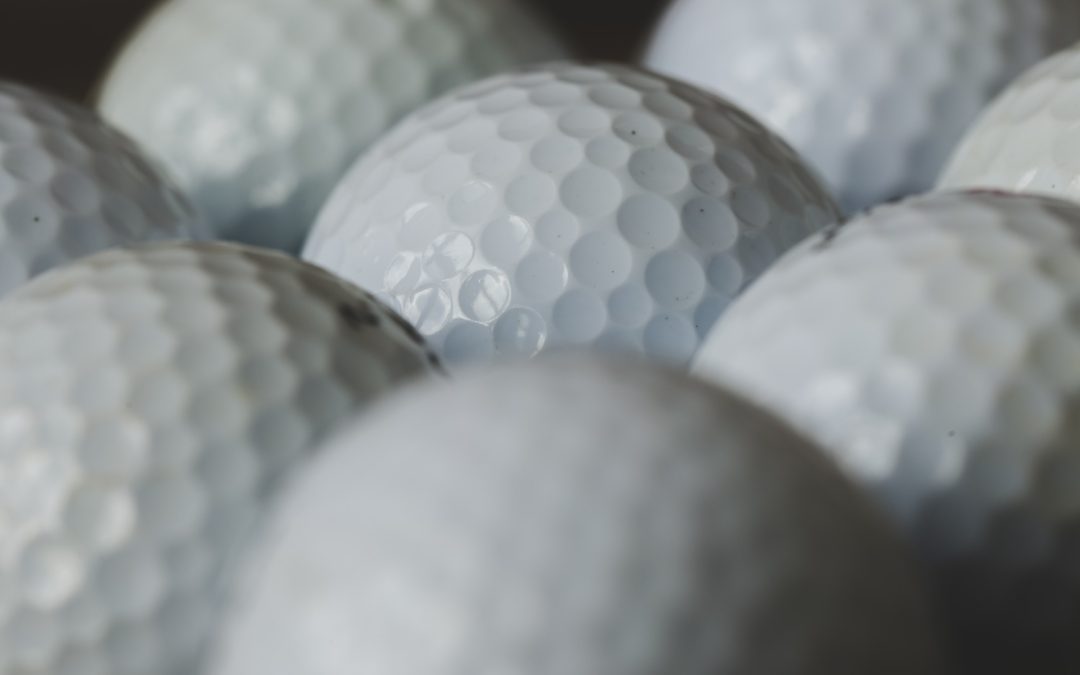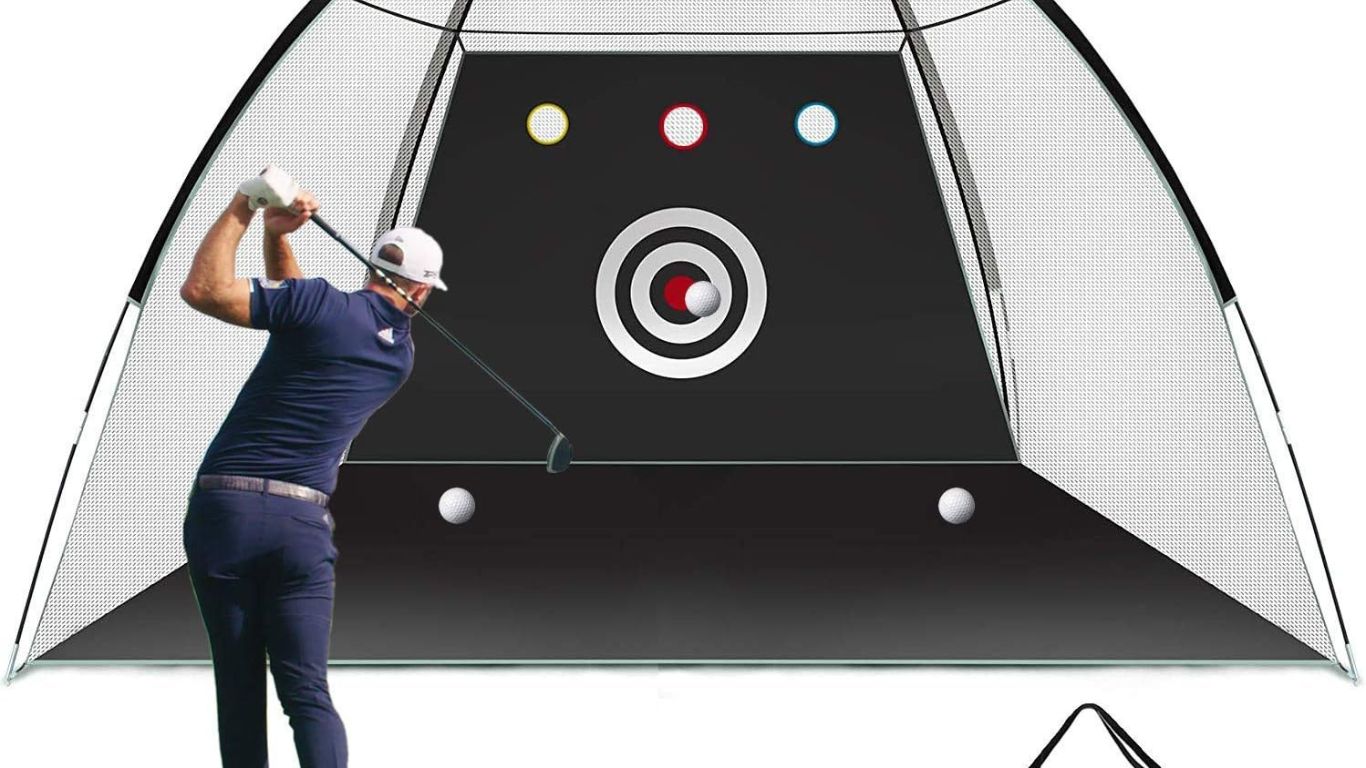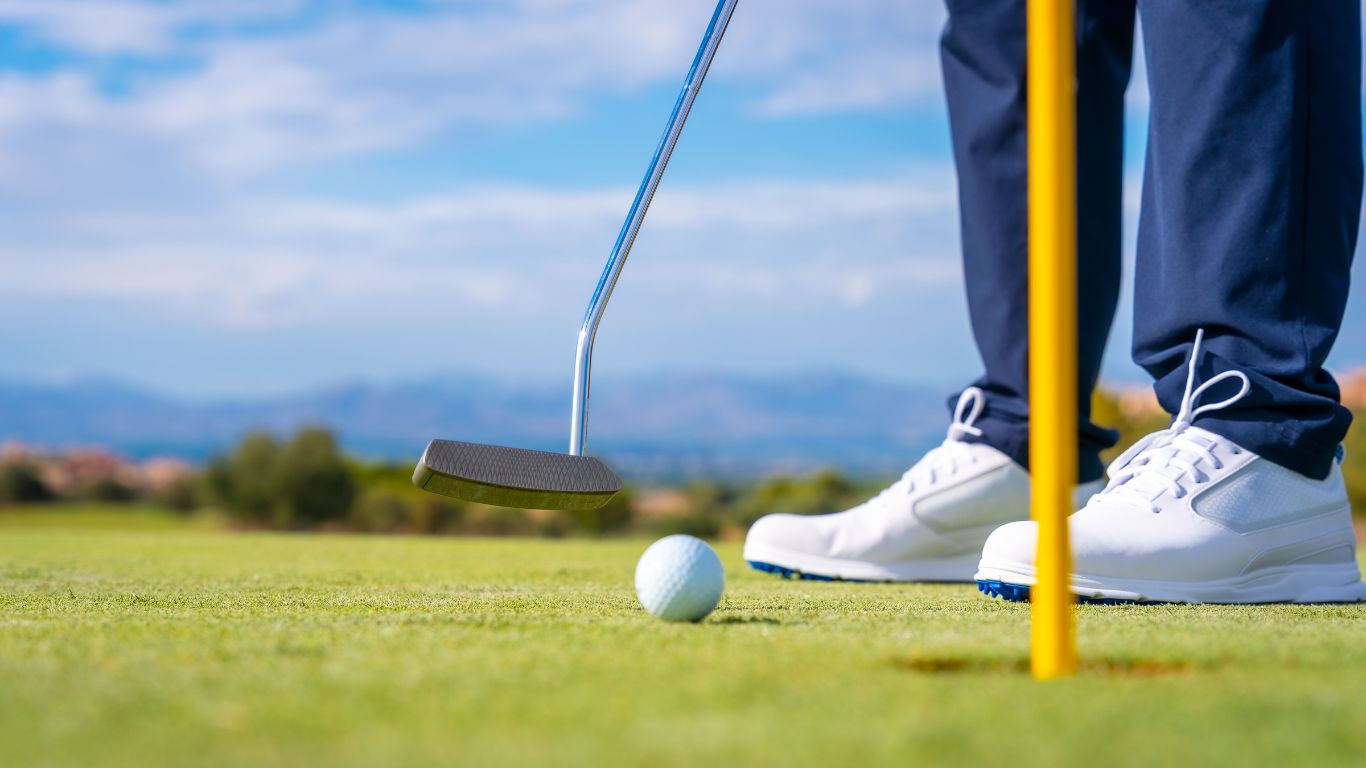A golf ball typically has 336 to 392 dimples, allowing it to achieve optimal flight stability and distance. Golf balls are designed with precision, and one key element is the dimples on their surface.
These small depressions are not just for aesthetics; they play a crucial role in the ball’s aerodynamics. When the ball is hit, the dimples create turbulence in the airflow around the ball, reducing drag and increasing lift. This allows the ball to stay in the air for longer and travel farther.
Golf ball manufacturers carefully calculate the number of dimples and their arrangement to maximize the ball’s performance. While the exact number may vary, most golf balls have between 336 and 392 dimples. This design feature has been refined over the years to optimize the golf ball’s performance and enhance the game of golf.

Credit: www.glenmuir.com
The Science Behind Golf Ball Dimples
Golf balls have various dimple patterns, with the typical number of dimples ranging from 300 to 500. The dimples reduce aerodynamic drag and increase lift, allowing the ball to travel farther. The Science Behind Golf Ball Dimples shows how these dimples enhance the ball’s flight performance.
Golf is a game that combines skill, technique, and the laws of physics. While the golf swing may seem like the most important factor in how the ball moves through the air, there is actually a lot more happening behind the scenes. One of the key elements that greatly affects the flight of a golf ball is the dimples on its surface. These small indentations may seem insignificant, but they play a crucial role in the science of golf ball aerodynamics.
The Purpose Of Dimples
Dimples on a golf ball serve a very specific purpose – to optimize its flight characteristics. Without these dimples, a golf ball would not travel nearly as far or as accurately. But why is that? The answer lies in the principles of aerodynamics. When a golf ball with a smooth surface is struck, the air surrounding it flows in a way that creates a large area of high pressure in front of the ball and a low-pressure area behind it. This difference in pressure creates drag, which slows down the ball and reduces its distance. However, when the surface is covered in dimples, the behavior of the air changes dramatically. The dimples disrupt the airflow around the ball, creating turbulence. This turbulence helps to delay the separation of the airflow, reducing the size and intensity of the wake behind the ball. As a result, the pressure difference is minimized, and the ball experiences less drag. With less drag, the golf ball can maintain its velocity and travel farther through the air.
Effect Of Dimple Pattern On Ball Flight
Not all dimples are created equal, and the pattern in which they are arranged on a golf ball can have a significant impact on its flight. Different manufacturers have experimented with various dimple patterns, each aiming to optimize the ball’s performance in terms of distance, spin, and trajectory. One common dimple pattern is the icosahedral pattern, which consists of 20 hexagons and 12 pentagons. This pattern provides a balance between lift and drag, allowing the ball to maintain stability during flight. Another popular dimple pattern is the dimple-in-dimple design, where each dimple has a smaller dimple within it. This design creates additional turbulence, further reducing drag and increasing distance. It is important to note that dimple depth and size also play a role in the ball’s performance. The depth and size of the dimples affect the amount of turbulence generated, which in turn impacts the ball’s lift and drag forces. Manufacturers carefully analyze these factors to find the ideal dimple configuration that will maximize a ball’s performance in different situations, such as with different club speeds and swing types. So, the next time you step onto the golf course, take a moment to appreciate the science behind the dimples on your golf ball. These seemingly insignificant details have a significant impact on the ball’s aerodynamics and can greatly affect your golf game. Choose your golf ball wisely and enjoy the optimized flight it offers, thanks to the clever design of those tiny dimples.
Calculating The Number Of Dimples
Have you ever wondered how many dimples are on a golf ball? The tiny indentations covering the surface of a golf ball actually play a crucial role in its performance. In this section, we will explore the different methods used to calculate the number of dimples on a golf ball and understand the importance of this characteristic. Let’s dive in!
Traditional Dimple Counting Methods
Determining the number of dimples on a golf ball was once a tedious task that involved physically counting each dimple one by one. This traditional method required immense patience and precision, as even a slight miscalculation could lead to an inaccurate result.
In some cases, manufacturers provided the exact dimple count on their golf balls’ packaging, making it easier for golf enthusiasts to know the precise number. However, not all brands disclose this information, leaving players and researchers to resort to other means of calculation.
In addition to manual counting, some golfers have developed their own techniques to count dimples using methods like grid counting or photographing the ball and analyzing the images. While these methods can provide reasonably accurate results, they are time-consuming and may not be suitable for large-scale calculations.
Advanced Imaging And Computational Techniques
With the advancements in technology, golf ball manufacturers and researchers now have access to more efficient methods for determining the number of dimples on a golf ball. Advanced imaging techniques, such as laser scanning and high-resolution photography, enable precise measurements and calculations.
Computational methods are also utilized to analyze the images obtained from these advanced imaging techniques. Through algorithms and complex computations, the images are processed to identify and count each individual dimple accurately. These computational techniques have drastically reduced the time and effort required to determine the dimple count.
Moreover, the combination of advanced imaging and computational techniques allows for a more detailed analysis of the dimples’ size, shape, and distribution patterns. This data is crucial for golf ball manufacturers, as it helps them optimize the ball’s aerodynamic properties and overall performance on the course.
In conclusion, calculating the number of dimples on a golf ball has evolved from traditional, laborious methods to more advanced and efficient techniques. With the help of advanced imaging and computational methods, golf ball manufacturers and researchers can gain valuable insights into the intricate design of these tiny indentations and improve the performance of golf balls.
Historical Evolution Of Dimple Count
Let’s delve into the fascinating journey of dimple count in golf balls. The dimples adorning the surface of a golf ball are not just there for aesthetic appeal; their design and count have evolved over time to enhance the ball’s aerodynamics and playability.
Dimple Count In Early Golf Balls
During the early days of golf, around the 19th century, golf balls featured a smooth surface. It wasn’t until the late 19th and early 20th centuries that golf ball makers began experimenting with adding dimples to the surface. These dimples were initially hand-hammered, and the count varied widely across different balls, with numbers ranging from 300 to 500 dimples, or more.
Modern Standardization Of Dimple Count
As golf ball technology advanced, manufacturers started to understand the important role dimples played in the ball’s performance. The United States Golf Association (USGA) and the R&A, the two main governing bodies in golf, eventually set regulations to standardize the dimple count. The current standard for golf ball dimple count ranges from 300 to 500, with the most common being around 336 dimples.

Credit: www.bendergloves.com
The Influence Of Dimple Count On Golf Ball Performance
When it comes to golf ball performance, one factor that plays a crucial role is the number of dimples on the ball’s surface. The dimples on a golf ball are not just a design element; they serve a purpose in enhancing the ball’s flight characteristics. In this article, we will explore the influence of dimple count on two key aspects of golf ball performance: distance and accuracy impact, and spin and trajectory control.
Distance And Accuracy Impact
The dimple count of a golf ball directly affects its aerodynamic properties, which in turn impact the distance it travels and the accuracy of its flight. The science behind this lies in the way dimples create turbulence in the air surrounding the ball, reducing drag and allowing the ball to maintain its speed for a longer distance.
Greater dimple count on a golf ball means more surface coverage and therefore more turbulence. This results in reduced drag and increased lift, which translates into longer distances. Additionally, the irregularities on the surface caused by the dimples help to prevent the formation of a laminar flow, which further promotes better accuracy.
In summary, a higher dimple count on a golf ball leads to increased distance and improved accuracy, making it an essential factor to consider when selecting a ball for your game.
Spin And Trajectory Control
Spin plays a crucial role in golf, especially when it comes to controlling the trajectory of the ball and influencing its flight path. The dimple count of a golf ball affects the amount of spin it generates during ball-to-clubface contact and its subsequent flight.
A golf ball with a higher dimple count tends to produce more spin as the additional surface coverage provides more opportunities for the air to interact with the ball’s surface. This increased spin can help golfers achieve greater control over the ball’s flight path, aiding in maximizing distance and accuracy.
Conversely, a lower dimple count on a golf ball may result in reduced spin, which could lead to a flatter trajectory and less control over the ball’s landing position.
To summarize, when it comes to spin and trajectory control, a higher dimple count on a golf ball allows for increased spin, providing golfers with greater control over their shots and the ability to shape their shots more effectively.
Future Trends In Golf Ball Dimple Design
Golf ball dimple design is constantly evolving to enhance performance on the course. Future trends include variations in the number of dimples, with designs ranging from fewer dimples for increased distance to more dimples for improved control and accuracy. These advancements aim to revolutionize the game and optimize players’ experience.
Golf is a sport that has continuously evolved over time, with new technologies and innovations constantly reshaping the way the game is played. One particular aspect of golf that has seen significant advancements is the design of golf ball dimples. These small indentations on the surface of the ball play a crucial role in its aerodynamics and flight characteristics. As we look to the future, several exciting trends are emerging in the field of golf ball dimple design that promise to enhance performance and further customize the playing experience for golfers of all skill levels.
Technological Innovations
Thanks to advancements in technology, golf ball manufacturers now have the tools to analyze and optimize dimple design like never before. Using advanced computer simulations and wind tunnel testing, they can precisely predict how different dimple patterns will affect the ball’s flight trajectory, spin rate, and overall distance. This level of precision enables manufacturers to fine-tune dimple designs and create golf balls that offer improved performance and enhanced playability on the course.
Customization And Personalization
With the growing emphasis on personalization in the world of golf, there is an increasing demand for golf balls that cater to individual preferences and playing styles. Manufacturers are responding to this demand by offering customizable options for dimple design. Golfers can now choose from a variety of dimple configurations, allowing them to optimize the ball’s performance based on their swing characteristics and course conditions. Additionally, some manufacturers even offer the option to have custom logos or initial markings imprinted on the golf ball, adding a personal touch to the game.

Credit: golfrus.co.uk
Frequently Asked Questions For How Many Dimples On A Golf Ball
How Many Dimples Can A Golf Ball Have?
A golf ball can have up to 336 dimples.
How Many Dimples Are On A Titleist Pro V1 Golf Ball?
A Titleist Pro V1 golf ball has 352 dimples, optimizing aerodynamics for improved performance.
Which Sports Ball Generally Has 336 Dimples?
A sports ball with 336 dimples is generally a golf ball.
How Many Dimples Does A Wilson Golf Ball Have?
A Wilson golf ball has 336 dimples on its surface. These dimples help reduce air resistance, allowing for better distance and control when playing golf.
Conclusion
In wrapping up, the number of dimples on a golf ball can vary, and it plays a crucial role in the ball’s performance. Understanding the significance of dimples can enhance your game and knowledge of golf. Whether it’s the traditional 336 dimples or a different count, the science behind them is fascinating.









